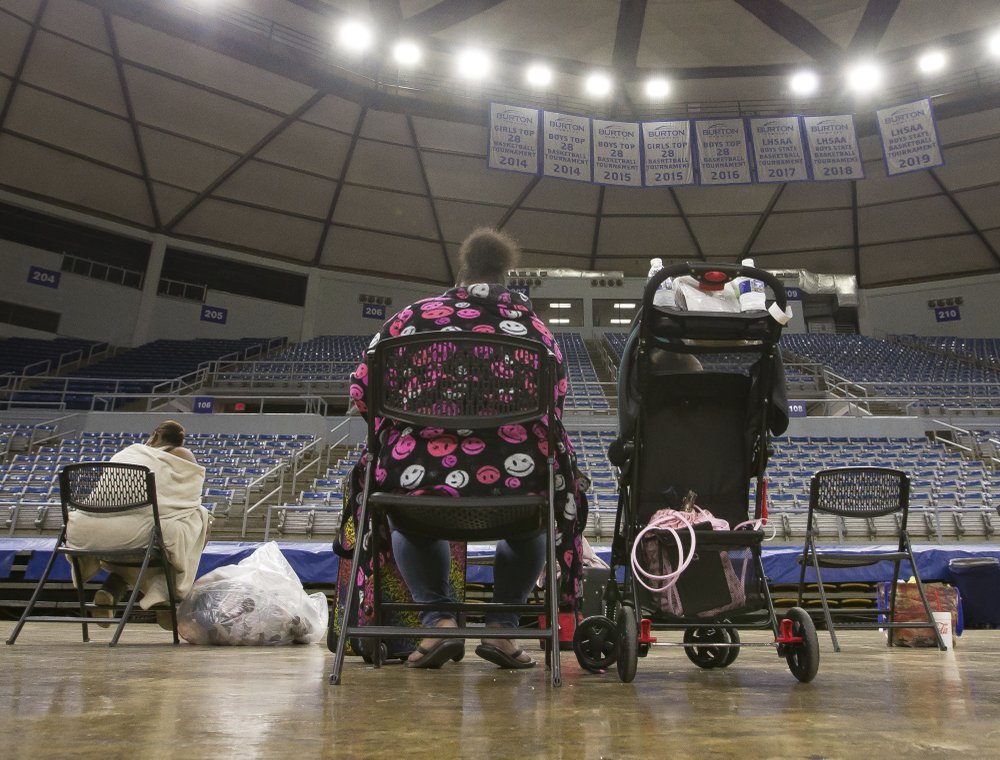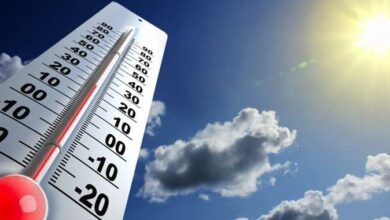
GALVESTON, Texas (AP) — Hurricane Laura is forecast to rapidly power up into a “catastrophic” Category Four hurricane, even stronger than previously expected, as it churns toward Texas and Louisiana, gathering wind and water that swirls over much of the Gulf of Mexico.
Satellite images show that Laura has become “a formidable hurricane” in recent hours, threatening to smash homes and sink entire communities. It has undergone a remarkable intensification, “and there are no signs it will stop soon,” the National Hurricane Center said in an update early Wednesday.
“Some areas when they wake up Thursday morning, they’re not going to believe what happened,” Stacy Stewart, a senior hurricane specialist at the hurricane center, said Wednesday.
“We could see storm surge heights more than 15 feet in some areas,” Stewart said. “What doesn’t get blown down by the wind could easily get knocked down by the rising ocean waters pushing well inland.”
Laura has grown nearly 70 percent in power in just 24 hours, with maximum sustained winds increasing to 110 mph (175 kph) with higher gusts, forecasters said early Wednesday.
“We are expecting widespread power outages, trees down. Homes and businesses will be damaged,” said Donald Jones, a National Weather Service meteorologist in Lake Charles, Louisiana, which is near the bullseye of Laura’s forecast track.
“I’m telling you, this is going to be a very serious situation,” Jones said.
A Category Four hurricane will do catastrophic damage: “Power outages will last weeks to possibly months. Most of the area will be uninhabitable for weeks or months,” the weather service says.
In the largest US evacuation of the pandemic, more than half a million people were ordered Tuesday to flee from an area of the Gulf Coast along the Texas-Louisiana state line.
More than 385,000 residents were told to flee the Texas cities of Beaumont, Galveston and Port Arthur, and another 200,000 were ordered to leave low-lying Calcasieu Parish in southwestern Louisiana, where forecasters said as much as 13 feet (four meters) of storm surge topped by waves could submerge whole communities.
The situation could be even worse in Cameron Parish, which could soon be under water.
“Cameron parish is going to part of the Gulf of Mexico for a couple of days based on this forecast track,” Jones said.
In Galveston and Port Arthur, Texas, mandatory evacuation orders went into effect shortly before daybreak Tuesday. “If you decide to stay, you’re staying on your own,” Port Arthur Mayor Thurman Bartie said.
Forecasters expect the storm’s top winds to increase to 130 mph (209 kmh) before landfall, pushing water onto more than 450 miles (724 kilometers) of coast from Texas to Mississippi. Hurricane warnings were issued from San Luis Pass, Texas, to Intracoastal City, Louisiana, and storm surge warnings from the Port Arthur, Texas, flood protection system to the mouth of the Mississippi River.
Laura also is expected to dump massive rainfall over a short period of time as it moves inland, causing widespread flash flooding in states far from the coast. Flash flood watches were issued for much of Arkansas, and forecasters said the risk of heavy rainfall will move to parts of Missouri, Tennessee and Kentucky late Friday and Saturday.
Fearing that people would not evacuate in time, Louisiana Gov. John Bel Edwards said those in southwest Louisiana need to reach wherever they intend to ride out the storm by noon Wednesday, when the state will start feeling the storm’s effects.
Officials urged people to stay with relatives or in hotel rooms to avoid spreading the virus that causes COVID-19. Buses were stocked with protective equipment and disinfectant, and they would carry fewer passengers to keep people apart, Texas officials said.
Whitney Frazier, 29, of Beaumont spent Tuesday morning trying to get transportation to a high school where she could board a bus to leave the area.
“Especially with everything with COVID going on already on top of a mandatory evacuation, it’s very stressful,” Frazier said.
Shelters opened with cots set farther apart to curb coronavirus infections. People planning to enter shelters were told to bring just one bag of personal belongings each, and a mask to reduce the spread of coronavirus.
“Hopefully it’s not that threatening to people, to lives, because people are hesitant to go anywhere due to COVID,” Robert Duffy said as he placed sandbags around his home in Morgan City, Louisiana. “Nobody wants to sleep on a gym floor with 200 other people. It’s kind of hard to do social distancing.”
The hurricane is threatening a center of the US energy industry. The government said 84 percent of Gulf oil production and an estimated 61 percent of natural gas production were shut down. Nearly 300 platforms have been evacuated.
While oil prices often spike before a major storm as production slows, consumers are unlikely to see big price changes because the pandemic decimated demand for fuel.
Laura passed Cuba after killing nearly two dozen people on the island of Hispaniola, including 20 in Haiti and three in the Dominican Republic, where it knocked out power and caused intense flooding. The deaths reportedly included a 10-year-old girl whose home was hit by a tree and a mother and young son crushed by a collapsing wall.
Laura’s arrival comes just days before the Aug. 29 anniversary of Hurricane Katrina, which breached the levees in New Orleans, flattened much of the Mississippi coast and killed as many as 1,800 people in 2005. Less than a month later, Hurricane Rita struck southwest Louisiana as a Category Three storm.
___
Mone reported from Galveston; Martin reported from Marietta, Georgia, and Plaisance from Stephensville, Louisiana. Associated Press contributors include Juan Lozano in Houston; Seth Borenstein in Kensington, Maryland; Julie Walker in New York City; Melinda Deslatte in Baton Rouge; Louisiana; Kevin McGill in New Orleans; Jay Reeves in Birmingham, Alabama; Evens Sanon in Port-au-Prince, Haiti; Cathy Bussewitz in New York; and Paul Weber in Austin, Texas.
Image: A United State Postal Service Employee covers a mailbox with plastic wrap after removing the last mail from it as the island prepares for possible impact from Hurricane Laura, Tuesday, Aug. 25, 2020, in Galveston. The plastic wrap signals that the final mail has been cleared from the box and prevents people from placing more mail inside in case of flooding. (Mark Mulligan/Houston Chronicle via AP)




